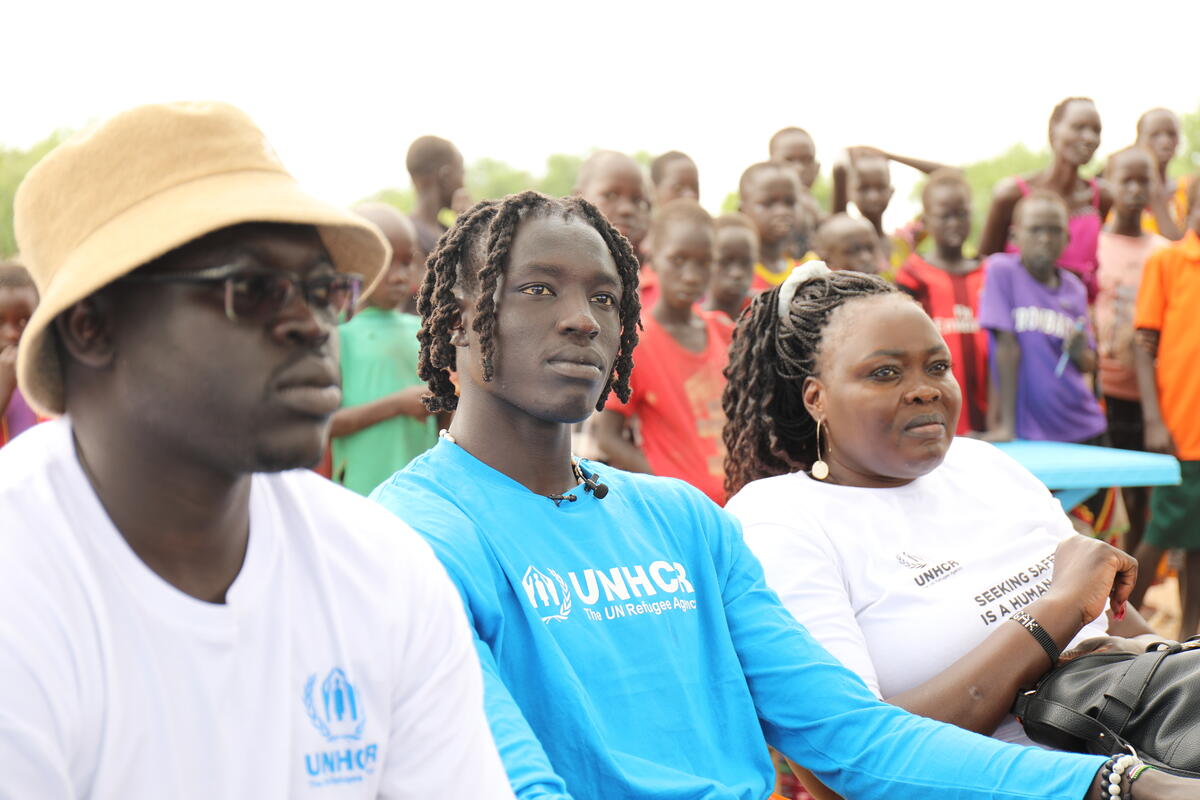Struggling to make sense of communal unrest in western Myanmar
Struggling to make sense of communal unrest in western Myanmar

MAUNGDAW, Myanmar, December 3 (UNHCR) - For generations, they lived side by side as friends and neighbours despite ethnic and religious differences.
"We ate from the same plate, drank from the same pond, and would visit each other's homes," said Noor Mohammed, 60, who until recently was living in Zay Kone Tan village in western Myanmar's Rakhine state. His village was the only Muslim one in a community of 23 villages.
To the north in Maungdaw township, Pwint Khine, 38, was teaching Muslim children in a kindergarten near her Rakhinese village. "I always treated them warmly, like brothers and sisters, like my own children," she recalls.
All that changed in June, when inter-communal violence broke out in Maungdaw and spread as far as the state capital, Sittwe. More than 100 people, including Pwint Khine's husband, were killed and thousands of homes burnt. Some 75,000 people remain displaced from that first wave of unrest.
In late October, renewed violence in eight townships uprooted more than 37,000 additional people, bringing the total number of displaced people in Rakhine state to some 115,000.
The international humanitarian community is supporting the Myanmar government in its emergency response. Under the inter-agency plan, UNHCR is taking the lead on protection issues, shelter and non-food items as well as camp coordination and camp management in Rakhine.
Working with the local authorities, the UN refugee agency is building longhouse-style temporary shelters for more than 11,000 displaced people from both communities around Sittwe, as well as 222 permanent houses for Rakhinese returnees in Maungdaw. Across the state, it is dispatching nearly 5,000 tents and distributed relief items such as plastic sheets, blankets, kitchen sets and hygiene materials to tens of thousands of people living in makeshift camps.
Noor Mohammed is one of those beneficiaries. His wife, seven children and 12 grandchildren are now among 235 people staying in a cluster of straw huts and UNHCR plastic sheets in Koe Tan Kauk camp, about two hours' drive from Maungdaw. UNHCR staff visit regularly to assess their needs and listen to any concerns they may have.
"This group currently has no latrines and no reliable source of clean water nearby. They have to walk for an hour to reach a stream which is running dry," said Nadir Minbashiyev, UNHCR's acting head of office in Maungdaw.
He added, "In northern Rakhine state, most of the displaced people were Rakhinese and UNHCR has been helping some of them to rebuild their homes. At the same time, we are advocating with the authorities to recognize and assist displaced Muslims in the area, most of them living with host families."
Conversely, the vast majority of displaced people in the Sittwe area are Muslim and UNHCR works to ensure that both communities receive assistance based on their needs.
Today Pwint Khine and her daughter live in a longhouse-style camp built by UNHCR in Sittwe. "I won't go back to Maungdaw. I've lost my husband, there is no school for my children and I don't feel safe to return," she says. "I will settle in Sittwe. I have already transferred my household certificate and am waiting for them to transfer me to a school here."
Noor Mohammed is less certain about his plans. "If we have land, we can cultivate crops. If we have cash, we can trade with the others," he says, adding that he lost everything in the unrest. "We don't know how we will survive in future. We are willing to go home if the government recognizes us and compensates us for what we lost."
Both the patriarch and the widow say they are still in shock over what happened in June, given the longstanding goodwill between their communities. While they struggle to meet today's needs and to plan for tomorrow, they know the biggest challenge is still ahead - finding a way to live together again.
By Vivian Tan in Maungdaw and Sittwe, Myanmar









